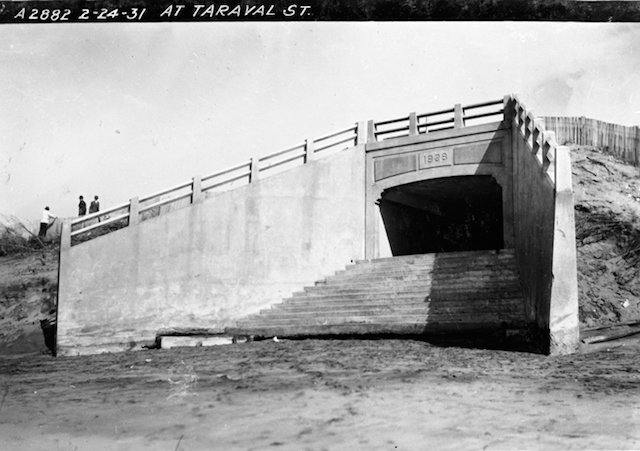As we continue San Francisco Appreciation Week, we thought we could dig back into some of the lesser known fun facts about the city, a few of which are likely to surprise even the most dyed-in-the-hoodie, longtime residents who consider themselves well versed in local lore.
The oldest public plaza in the city is Portsmouth Square, which did not originally have that name when it was a public square in the Mexican community that called itself Yerba Buena in the late 18th and early 19th Century. Then came the order for the USS Portsmouth to seize Yerba Buena for the United States in 1846, just ahead of the Gold Rush that would redefine the region and draw tens of thousands of new (mostly male) residents inside of a couple of years. It's now a public park on top of a parking garage in the heart of Chinatown, bounded by Kearny, Clay, and Washington Streets on three sides, but once upon a time it was home to the first public school in California at its southwest corner, at Clay and Walter U. Lum Place.
Demand for food during the Gold Rush led to the plundering of a number of native bird species (for their eggs), Tule elk, and mollusks like oysters. Native Pacific Oysters in San Francisco Bay were largely outnumbered within a few years by non-native species imported from elsewhere, like Eastern and Mexican oysters, as well as invasive species brought from the East Coast like Softshell Clam (Mya arenaria) and Eastern Mudsnail (Ilyanassa obsolete), causing the native mollusk population essentially to disappear from the Bay. (Source: California History, Summer 2014)
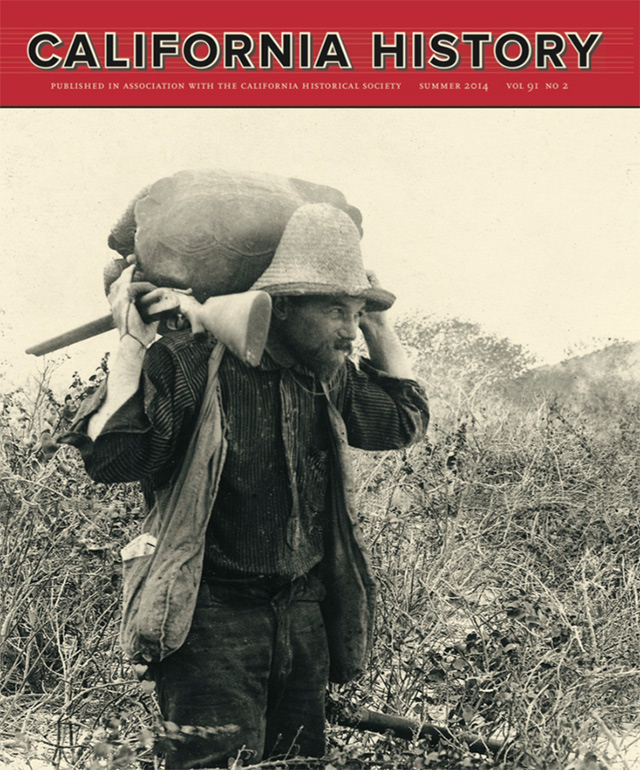
A common sight in the streets of downtown San Francisco during the early Gold Rush years would have been sea turtle and Galapagos Island tortoise races, often sponsored by local restaurant owners. The turtles and tortoises were a huge import business for ship captains ferrying sailors from the eastern US up the Pacific coast, largely because they were fresh meat that could be kept alive in ships' holds for weeks without food or water, and meat was otherwise scarce. (Source: California History, Summer 2014)
Also, some of the most common items you'd see advertised in newspaper ads for local saloons in the early Gold Rush days would have been "green turtle steaks," "terrapin stew," and "turtle soup." Restaurants kept the turtles corralled behind their restaurants, but by 1896, the turtle and tortoise populations had become so decimated and imports so scarce that restaurants made fake "green turtle soup" and would pass a single live turtle back and forth to convince customers they still sold the real deal.

A cartoon by Edward Jump picturing Bummer and Lazarus begging scraps from Emperor Norton. public domain via wikimedia commons
San Francisco has always been obsessed with dogs. In the 1850s and 60s, stray dogs were rampant on the streets of the city, and among them, two stood out for their close bond to one another. Bummer and Lazarus, as they were called, were soon enshrined in city lore, becoming a fixture of local news writing and cartoons. According to the Alta California in 1861, the mutts met thusly:
"Three or four days ago, a poor, lean, mangy cur was attacked in the street by a larger dog, and was getting unmercifully walloped, when BUMMER's ire being aroused at the unequal contest... He rushed in and gave the attacking canine such a rough handling that he was glad to quit the field. ... The poor cur had one of his legs half bitten through, and having limped upon the sidewalk, he proceeded to scrape an acquaintance with his deliverer, BUMMER, who thenceforth took him under his special protection. Every night since then, the 'twa dogs' have slept coiled up together close to some doorway - BUMMER always giving the lame cur the inside booth, and trying to keep him as warm as possible."
Bummer's companion became known as Lazarus, and together they took on the task of hunting rats for food, which won them praise in the rodent infested city. The San Francisco Bulletin claimed in 1863 that they'd once killed 400 in a single hunt at a fruit market. Bummer and Lazarus were inseparable to the end, known sometimes as the Damon and Pythias of San Francisco for the similarly devoted Greek philosophers. Their names appear together on a plaque in the Redwood Grove park next to the Transamerica Pyramid.
In the early 1860's, before formal plans for Golden Gate Park had been drawn up, the city contracted with famed landscape architect Frederick Law Olmstead, designer of New York's Central Park (which had opened in 1858), seeking advice about its location and design. Olmstead's initial idea, outlined in a memo to the city, would have placed the park almost in the center of the city, incorporating the hills along Gough and Franklin Streets, extending west from Market Street starting where UN Plaza and Civic Center are now, and overtaking what's now the Western Addition. Olmstead also cautioned that he had no idea if a park as grand as New York's could really exist here, since there were so few mature trees on the San Francisco peninsula at the time, and he was not sure what could grow here. (Source: Frederick Law Olmsted: Writings on Landscape, Culture, and Society)
Golden Gate Park would ultimately be the project of the city's field engineer William Hammond Hall and his assistant, John McLaren, and by 1875 it would be home to 60,000 trees, many of them the same Monterey pines you see there today.
The northern windmill at the ocean side of Golden Gate Park, nicknamed the Dutch Windmill, was built in 1902 with the assistance of Queen Wilhelmina of the Netherlands, the grandmother of the Netherlands' current Queen Beatrix. Surrounding it is now a tulip garden added in 1980, named for Queen Wilhelmina, and to this day it is maintained by the Dutch consulate in San Francisco. The second windmill was added later, and both used to serve functional purposes pumping water.
The Richmond District was so nicknamed because of one of its early residents, an Australian art dealer named George Turner Marsh. He thought the area looked like a suburb of Melbourne called Richmond, and therefore named the home he built there Richmond House, which ended up getting adopted by others who settled nearby. In 1917, the city pushed to rename the area Park-Presidio, to avoid confusion with the East Bay city of Richmond, but the name never stuck.
And you know why Cow Hollow is called Cow Hollow? It was once the center of the local dairy industry with some 38 dairy farms in the area by the late 19th Century.
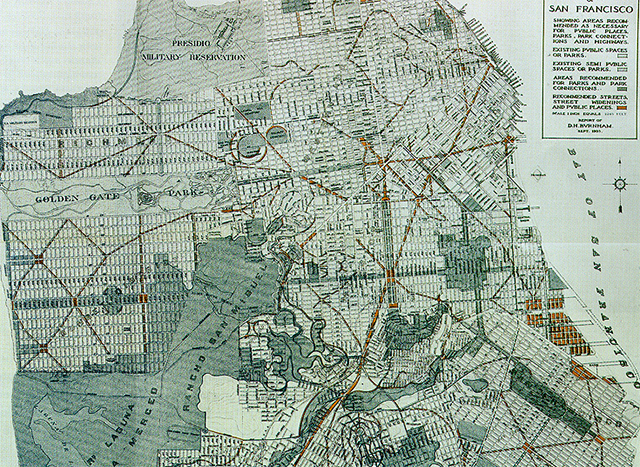
Burnham's plan for reimagining the city grid, ca. 1905.
Similar to Olmstead's ambitious plan for a central city park, famed Chicago architect Daniel Burnham would be called upon in the years before the Great Earthquake and Fire to imagine a new plan for the city. Burnham's subsequent 1905 plan for San Francisco included multiple new circular intersections and diagonal streets cutting through various parts of the city the idea being that strict grids are too monotonous and great cities, like Paris, are shot through with diagonal promenades, creating more interesting architecture. The plan also included a grand Athenaeum on Twin Peaks including a 300-foot statue and a waterfall, but the cost of it all was totally infeasible, and the entire thing was scrapped after the earthquake.

Did you know that those fancy columns at the 19th Avenue entrance to Golden Gate Park is what remains of the Breon Gate? Designed and constructed by John D. McGilvray, it was a gift to SF from local philanthropist Christine Breon to memorialize her late husband Paul and their deceased son Charles. According to a January 15, 1898 article in the San Francisco Call, the gate was to have an elaborate design that included images of the Breon family, grizzly bears, eagles, angels, and more. Dedicated in 1923, significant portions of the gate were removed in 1938 to allow that intersection to become the major thoroughfare it's developed into today.
San Francisco was once home to a lot of brothels, some more secretive than others. Take, for example, the Homestead. Unconfirmed rumor has it that a brothel used to be run out of the upstairs, and that the fireplace now hides what was once a secret staircase. The paintings of naked women on the walls of the bar are supposedly an homage to that history. Similarly, The Saloon in North Beach, when it was known as Wagner’s Beer Hall back in the late 1800s, was known to have an upstairs brothel as well, which may not have been so secret.
No one can say exactly when San Francisco became a gay mecca, and many pin it to the post-war years of the 1940's and 50's, when former sailors and soldiers stationed here or disembarking here by the thousands decided not to go home to middle America and to continue having sex with men. But we know there was a gay bar in North Beach in 1908 called The Dash, which may have only lived for about a year before being shut down by authorities, where men dressed in drag as waitresses and would reportedly perform various sex acts for a dollar.

Illustration via the Library of Congress
The Old Ship Saloon was just one of many saloon locations that were built, literally, out of abandoned ships that were once moored along the shore, and quickly became surrounded by land as San Francisco's Gold Rush settlers filled in the shallows of the former Yerba Buena Cove in and around the Financial District and North Beach. The illustration above shows a depiction of the Niantic Hotel and its neighbors buildings built in a hurry directly atop hemmed in ship hulls.
There are so many abandoned ships buried under downtown that a Muni tunnel actually passes right through one.
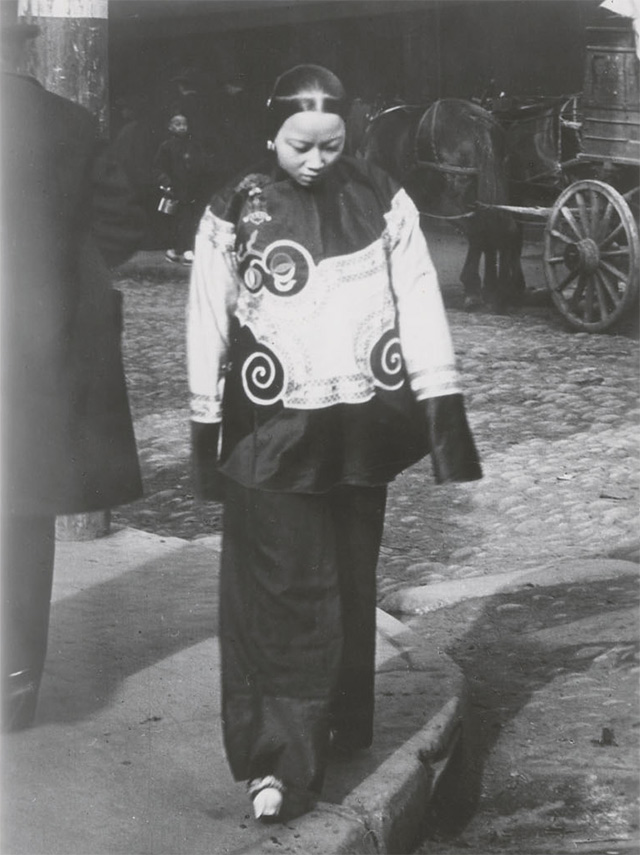
A woman identified by at least one publication as Ah Toy.
One of America's first hugely famous prostitutes, Ah Toy, arrived in San Francisco from China in 1849. As SFist discussed in this list of infamous local legends, Ah Toy was said to have made a small fortune, to start, by charging men two bits for a "lookee" and four bits for a "feelee," and thereby earning hundreds of dollars without ever having intercourse. She later became a successful madam and sex trafficker before "retiring" to Santa Clara County.
There's significant evidence to suggest that multiple SoMa alleys were named for famous prostitutes of the Gold Rush era. Think Dore Alley, Cora Street, Jessie Street, Isis Street. Broke Ass Stuart did a deep dive into this topic last year, and helpfully informed us that Minna Street is believed to have been named for Minna Rae Simpson — a popular sex worker of the time. As was Cora Street, which was reportedly named after the famous madam Belle Cora.
A craze for ostrich feather accents in women's clothing caused a boom in ostrich farms all over Northern California in the early 1900s, but no CA location seems less friendly to the giant crabby beasts than the notoriously foggy and cold shores of Ocean Beach. And yet, that's where the Golden Gate Ostrich Farm was, opening in March of 1913 at 47th Avenue and Balboa Street. Its run was short-lived, however: When World War I broke out in 1914, fashion got a lot more conservative, and ostentatious female plumage was frowned upon. After a year and a half, the farm closed up shop and dumped their remaining ostriches at Golden Gate Park, an ignominious fate for the once-glorious birds.
The first epidemic of bubonic plague in the United States occurred in San Francisco's Chinatown in 1900, leading briefly to a quarantine of the entire neighborhood.

A single block of Chinatown between Jackson and Pacific in 1885 was thought to be home to a half dozen opium dens, three dozen houses of prostitution, and three gambling parlors, according to this map. Meanwhile, you would have found all the white prostitutes over at Sacramento and Stockton.
Murphy beds were invented because of San Francisco housing scarcity in 1918. Beds that fold into walls, often the stuff of slapstick comedy, have come in and out of vogue since their popularization by William Lawrence Murphy (1856-1957). Murphy created his brand of bed out of a particular urban necessity: He was living in a one-room San Francisco apartment lacking sorely for space while trying to woo his future wife, a local opera singer. Smithsonian.com recalls that fin-de-siècle customs would not permit a woman to enter a single gentleman's bedroom, but by folding his bed into a closet, they apparently felt the room constituted a parlor, allowing him to entertain her there. Murphy's design, patented in 1918 as Murphy In-A-Dor bed, was far from the first folding bed, yet his his name and rough design are still synonymous with the innovation, which retains its utility for certain cramped San Francisco living quarters.
Chinese food was introduced to America by San Francisco not once, but twice. First, with the first wave of Chinese immigration in the 1850's due to the Gold Rush, prospectors landing in SF came to find that Chinese restaurants here tended to be the best restaurants, distinguished typically with “long three-cornered flags of yellow silk”. As Time notes, "By the mid-19th century, the United States had what could be called a fledgling restaurant culture at best, while much of China had had many centuries worth of experience in hospitality," and thus Chinese immigrants had little trouble impressing diners. These gave way to chop suey joints which would proliferate around the country in the early 20th Century, but it wasn't until the 1960's, with the opening of Cecilia Chiang's The Mandarin first on Polk Street, then in Ghirardelli Square that the second wave of Chinese food's popularity would sweep the country, with Szechuan, Hunan, and so-called "Imperial" Chinese dishes America had never known before.
Cecilia Chiang's son Philip, who grew up in and around The Mandarin, became the co-founder of the P.F. Chang's restaurant chain in 1993 with partner Paul Fleming, the P.F. in the name.
Prohibition was barely a thing in San Francisco, by many accounts, but even though enforcement was lax by cops, bar owners got clever with how they got their patrons drinks, leading to two of SF's enduring drinks: Fernet Branca, a popular import by local Italian immigrants that passed muster as "medicinal" and was therefore legal; and Tosca Cafe's "house cappuccino," which probably never had any coffee in it all, and likely began being served in that era.
During and after Prohibition one of the hottest nightspots downtown was Coffee Dan's, where a slide dating from 1917 delivered patrons from the street to the basement venue. The place had a famed custom of putting small wooden mallets on tables that customers could use to applaud by banging, and the place was known to attract great jazz acts. The place also figures in the early "talkie" film The Jazz Singer, from 1927, and its last location at 430 Mason Street is now home to Slide, which revived the slide entrance.
When you hear "Sunset Tunnel" you likely think of a tunnel that isn't in the Sunset at all — the 1.2 mile long tunnel that Muni's N Judah line takes from Cole Valley to Duboce Park. But the Sunset was once home to some tunnels of its own: the Wawona, Taraval, and Judah Pedestrian Tunnels that ran beneath the Great Highway. Built in the 1920s, they were shut down in the '80s when the city laid a massive sewer line that runs along Great Highway to the Westside Sewage Plant by the zoo. Shifting Ocean Beach sands revealed some of their remains in February, as the dismantled concrete was used in an effort to keep the beach in place.
San Francisco's nickname "Baghdad by the Bay" was coined by SF Chronicle columnist Herb Caen in the 1940's, and became the title of a book of his columns in 1949. And while latter-day associations with the city of Baghdad are mostly about the Iraq War, Caen's associations were with a sophisticated, exotic, ancient multicultural center.
And even in Caen's day, in the 1940's, San Franciscans referred to the public transit system as "Muniserable."

Philo T. Farnsworth and his invention, the cathode ray tube. San Francisco History Center, SF Public Library
Before YouTube there was the cathode ray tube, invented in 1927 on Green Street by Philo Farnsworth. Though others had tried to create a similar effect with mechanical parts and moving mirrors, Farnsworth was the first to fashion an all-electronic television system. At the foot of Telegraph Hill, a 21-year-old Farnsworth projected a stream of electrons onto a screen creating a simple blue line, and soon his invention was emitting shapes and sending images as far as the Merchants' Exchange Building at Battery and Washington, eight blocks away. The Radio Corporation of America (RCA) contested Farnsworth's status as the creator of TV, but he won the right to be known as the "Father of Television" after a decade-long legal battle. That was in part thanks to testimony from his high school teacher, for whom he had drawn his idea for an "image dissector tube" when he was just 14. Though perhaps less well-known than the Lumière brothers or Guglielmo Marconi, the radio inventor (who once visited Farnsworth at his Green Street Lab according to an entry on SF City Guides) Farnsworth's place in technological history is secure — as is his place at 202 Green Street, where his old lab bears a plaque as California Landmark #941.
You may not know that the bear on the California state flag is based on a famous grizzly bear kept in Golden Gate Park. You've seen the famous Golden Gate Park buffalo, docile in their paddock along JFK drive, but imagine instead a live grizzly. One could indeed be found for more than 20 years at the park's "Menagerie," a precursor to the San Francisco Zoo. In 1889, as Katherine Girlich writes in her book on the zoo's history , newspaper owner William Randolph Hearst challenged Examiner reporter Allen Kelly to find a live California grizzly as a publicity stunt. Kelly eventually did, near Los Angeles after six months of searching, capturing it by luring it into a pen with mutton and honey. The bear was named Monarch by Hearst after his newspaper tagline, "Monarch of the Dailies," and was thought to be the last of his kind, which was very nearly true. Monarch was brought to San Francisco on a train and greeted by a crowd of 20,000 at the Townsend Street Station. He was then kept in Woodward's Gardens for a year, and after that, put in a cage in Golden Gate Park, where he was heralded as a symbol of wildlife conservation. Monarch died in 1911, mostly forgotten and sad in pictures. His body, skinned and stuffed, is now an altogether different symbol at the California Academy of Science and on the state flag, which was finalized with him as a model for the brown grizzly at its center in 1955.
Dianne Feinstein at the SF Erotic Film Festival (1970) from Mike Stabile on Vimeo.
California Senator Dianne Feinstein began her political career as a San Francisco supervisor in the Marina district, largely campaigning against the proliferation of porn theaters. Her anti-porn crusade would later lead to the infamous Mitchell Brothers posting her home phone number on the marquee of the O'Farrell Theater with the words "Want a good time? Call Dianne."

Photo courtesy of Chez Panisse
The early days of Chez Panisse were not great ones from a financial perspective. As CNN noted in this recent profile of Alice Waters and the restaurant, the staff in the 1970's were all encouraged to taste all of the wines so they could better sell them, and they ended up costing the restaurant thousands of dollars on a regular basis in missing bottles. Also, as Jeremiah Tower noted in his memoir California Dish, cocaine flowed freely in that kitchen too.
Among his many accomplishments, local civil rights leader and newspaper publisher Dr. Carlton B. Goodlett won the right of African-American and non-white doctors to practice in SF's public hospitals, where they were barred from treating their own patients. In 1945, Goodlett was one of only three black doctors in the city. In 1999, two years after his death, the Board of Supervisors voted to change the official address of City Hall to 1 Carlton B. Goodlett Place. (Source: LA Sentinel)
According to an account by Willie Brown given in David Talbot's book Season of the Witch, he was in the office of Mayor George Moscone the morning Moscone was fatally shot by former Supervisor Dan White, and Brown says he passed White in the hallway on his way out. If Brown's account is true, Moscone's last conversation before his death was about going to a lingerie store later that day with Brown where young women would model the goods, in order to shop for the holidays.
The San Francisco 49ers' longtime head athletic trainer from the 1980's to 2004, Lindsy McLean, was openly gay. As of his retirement he was the only openly gay trainer in the NFL, and he may still be.
Famed SF music promoter and Fillmore Auditorium founder Bill Graham was a Holocaust survivor, born to Jewish parents in Germany with the name Wulf Wolodia Grajonca. His mother died at Auschwitz after placing him and his sister in an orphanage where they were part of an exchange with a French orphanage, and relocated to France. He was one of the One Thousand Children given safe passage to the United States without their parents, and in the 1980's he protested against President Reagan's decision to lay a wreath at the Bitburg World War II cemetery where SS soldiers were also buried. (Source: Wikipedia)
Bill Graham appears in several movie cameos, playing rock promoters, in both Apocalypse Now and The Doors. He also plays Lucky Luciano in the 1991 film Bugsy.
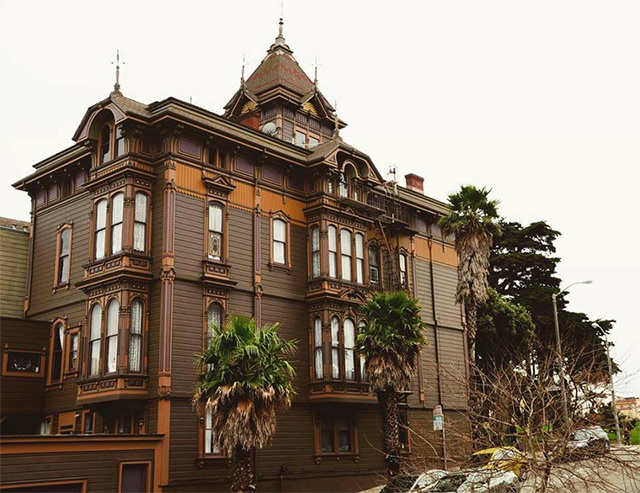
Photo via Matt Alavi/House of Legends
The big spooky-looking mansion by Alamo Square at Fulton and Scott, the Westerfeld House which may be the subject of an upcoming documentary and was used as a shooting location for Season 2 of Sense 8 served as a setting in the novel The Electric Kool-Aid Acid Test by Tom Wolfe. It was also briefly home, in 1967, to famed Satanist Anton LaVey, who was said to have kept a lion cub in the tower for use in Satanic rituals. A door jamb leading up to the tower still shows the cub's scratch marks.
Eve Batey, Jack Morse, and Caleb Pershan also contributed to this piece.
Related: The Best Quotes About San Francisco And The Bay Area




